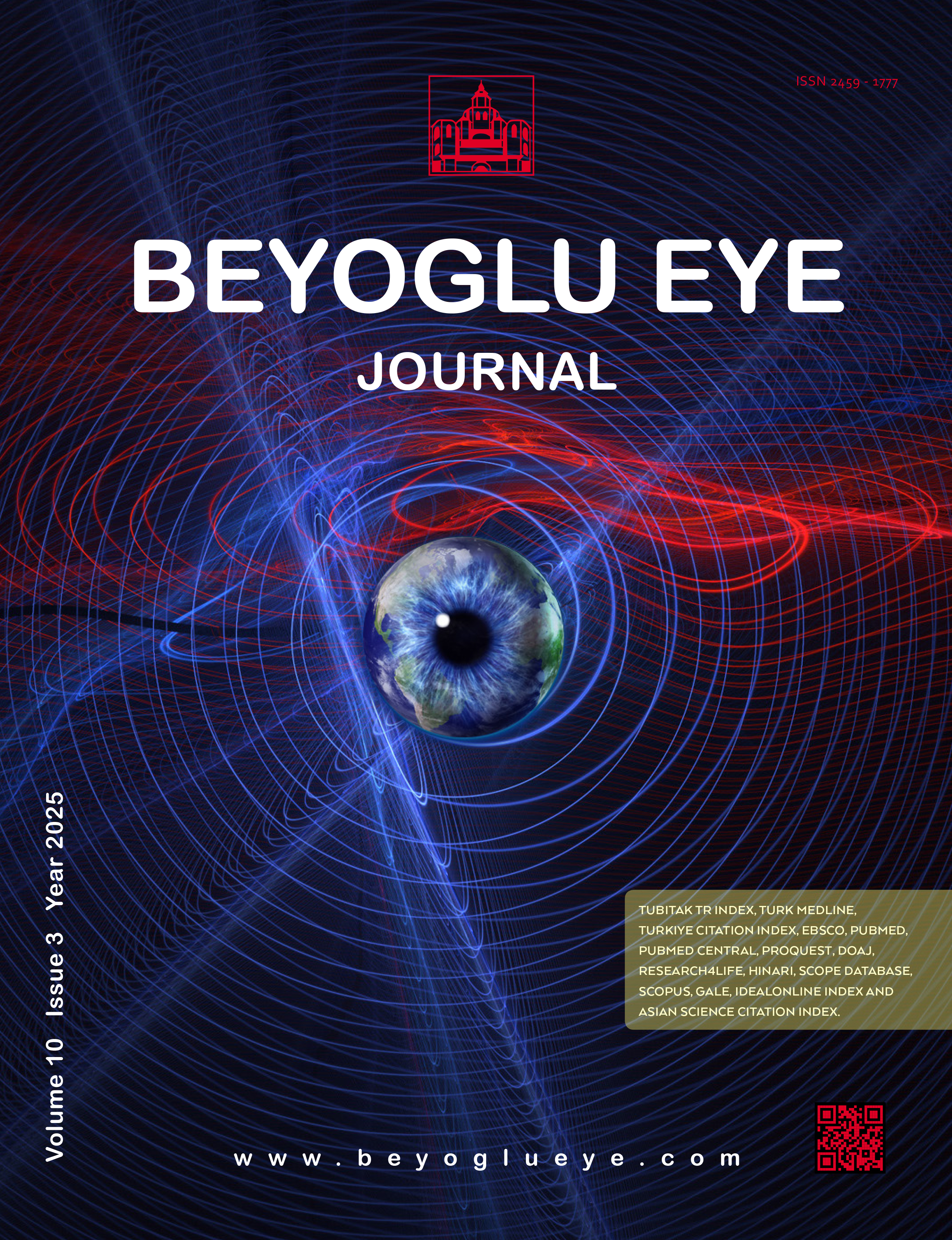
Acute Binocular Diplopia: Underlying Causes, Factors Affecting Predictivity of Spontaneous Resolution
Anil Agackesen1, Aysin Tuba Kaplan1, Eren Goktas2, Tulin Akturk31Department of Ophthalmology, Kartal Dr. Lutfi Kirdar City Hospital, Istanbul, Türkiye2Department of Ophthalmology, Samsun Training and Research Hospital, Samsun, Türkiye
3Department of Neurology, Kartal Dr. Lutfi Kirdar City Hospital, Istanbul, Türkiye
OBJECTIVES: In this study, we aimed to investigate the factors affecting spontaneous recovery in cases of acute binocular diplopia.
METHODS: A total of 224 patients presenting with acute binocular diplopia within 7 days were included in this study. The age, gender, etiology, and radiological findings of the cases were retrospectively examined and noted. The status of diplopia in the 6th month was noted.
RESULTS: The most commonly identified causes were presumed microvascular (28%), cerebrovascular (14%), and autoimmune-inflammatory (14%) in origin. Spontaneous recovery in diplopia was observed in 153 cases (68.3%) at 6 months. While the recovery rate was high in the presumed microvascular and idiopathic groups, it was low in the neoplastic group. Cranial nerve palsy was detected in 132 patients (58.9%). The most common were 6th, 3rd, and 4th nerve palsies, respectively. No difference was found in terms of spontaneous recovery at 6 months among cranial nerve palsies (p=0.952). The spontaneous recovery rate was found to be significantly higher in patients without radiological imaging findings (p<0.001).
DISCUSSION AND CONCLUSION: It is important for the physician to predict whether diplopia will resolve spontaneously. While the underlying etiology and neuronal damage are crucial factors, radiological imaging findings of the patients can also provide valuable insights.
Manuscript Language: English









